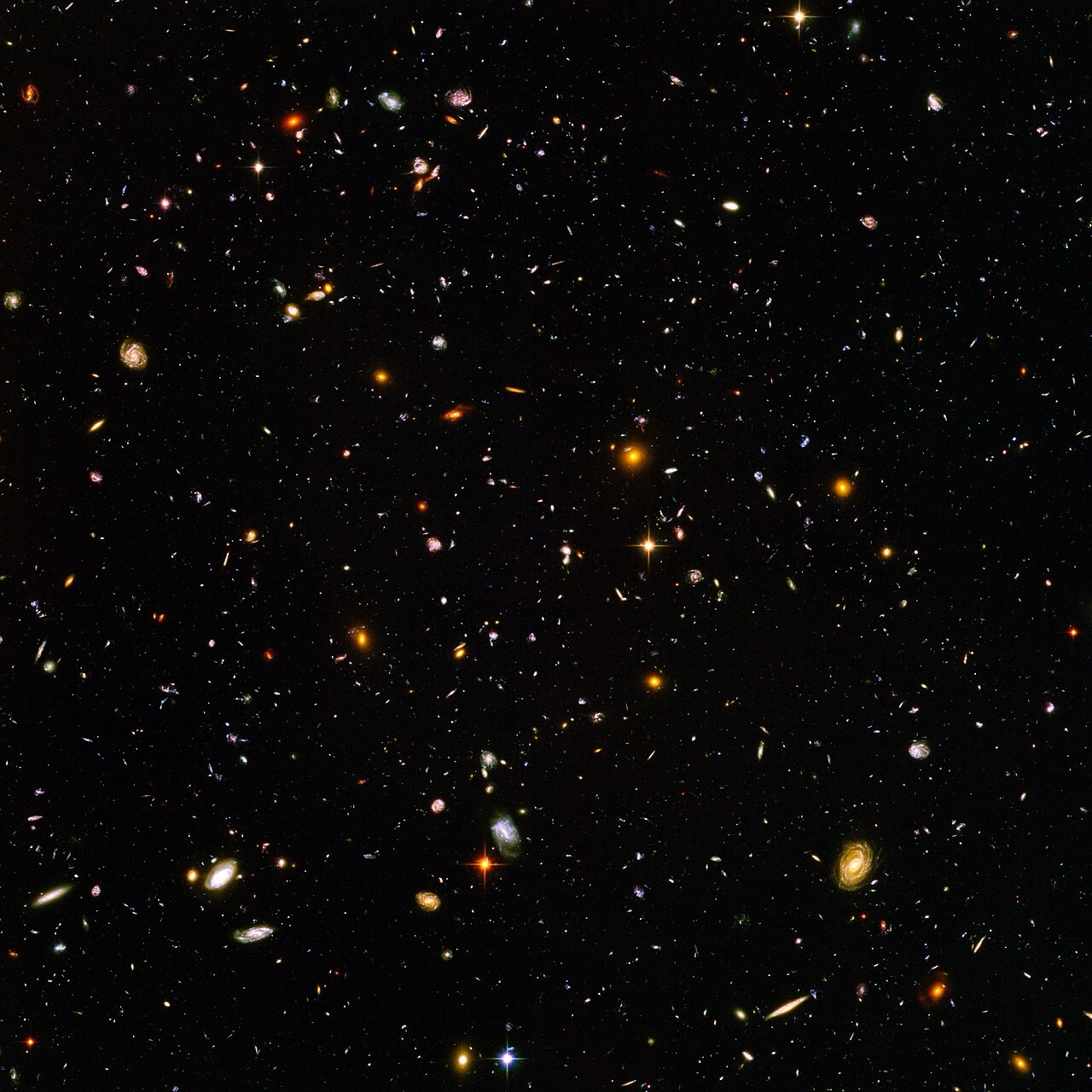I dunno whether it counts: but that science has effectively cured AIDS.
In 2004, 2.1m people died from it. Twenty years later that figure was a little over a quarter at 630k. The goal for 2025 is 250k. I think that’s absolutely remarkable.
As a child in the 80s I was terrified of AIDS. It made me low-key scared of gay men because the news made it sound like I could I could get it from any one of them. And here we now are, able to provide a medication that can almost completely ensure that you will never be infected by HIV.
Astonishing, really.
Retinal photosynthesis, also known as the Purple Earth Theory. Colours are weird. Earth plants absorb red and blue light, they look green to us because that’s the wavelength of light that cannot be used by the chloroplasts.
It’s hypothesized that this was advantageous on Earth because blue light goes further into water than the other wavelengths, facilitating the development of photosynthetic algae
Retinal photosynthesis is another viable chemical chain reaction that could be used to create ATP (usable biological energy) from light.
It’s another molecule similar to chlorophyll, but it absorbs green light instead of red/blue - alien planets might be purple!
There’s a viable parallel evolutionary pathway that leads to plants with magenta leaves
When the moon is at its farthest orbit from earth, all of the planets in the solar system can fit in between earth and the moon.
That time passes differently in galaxies with different gravities. One of these galaxies is Mormon heaven.
Wait what
Gravitational time dilation is an effect of Einstein’s General Theory of Relativity. Places with stronger gravity would then have time pass more slowly compared to earth. The opposite is also true.
I think it’s the Mormon bit that’s being questioned.
Kolob is a planet or star where God resides. Time moves very slowly there. Hence the high gravitational field. Probably because God is massive. I don’t know. I’m not a Christian scientist.
the implication of einsteins mass-energy equivalence formula is mind-blowing to me. one gram of mass, if perfectly converted to energy, makes 25 GWh. that means half the powerplants in my country could be replaced with this theoretical “mass converter” going through a gram of fuel an hour. that’s under 10 kilograms of fuel a year.
a coal plant goes through tons of fuel a day.
energy researchers, get on it
If mass can convert into energy that easily then we’re all in a lot of trouble…
What do you think fusion research is?
Studies into how to make a more efficient kettle.
I mean, you’re not wrong… XD
Just a fancier way to spin turbines with steam
Fancier or more efficient?
15 years away from a useful result
a fun fact: for the most efficient mass energy conversion, you need a huge spin black hole (preferably naked). Then you can get about 42% conversion. (there was a minute physics video about it i think)
No where near perfect mass conversion…
Max theoretical mass-energy conversion efficiency is under 1%
that’s still waaayyyy more efficient than coal
That is a different level entirely.
The mass-energy conversion from chemical processes is extremely small compared to nuclear processes, you can’t really compare the in any meaningful way
yes you can. coal costs ~32 cent per kWh, and uranium ~$0.0015 per kWh
We were talking about the mass-energy conversion, for nuclear fusion.
Not really sure how nuclear fission Vs coal cost/kWh is relevant.
The label ‘homo sapiens’ for our species.
Biological evolution
For the sake of discussion, let’s say on the one hand a magic man intelligently designed life and all that. And on the other hand we have it arise and evolve over the course of billions of years of random atomic interactions and genetic mutations. I honestly find the second one far more amazing, wondrous, amazing, and mind blowing.
The fact that there is no discernable difference between an alive body or a dead body when it comes to chemical makeup.
All the pieces are there. All the atoms and molecules are still in the same places. Yet despite this the body is still dead.
yes, the same atoms are still there, but all the chemical processes in our body have stopped.
To be fair, a perfectly fine but dead body is impossible to observe since the process of dying is usually the result or accumulation of injuries or disfunctions. For this experiment you either have to kill somebody without altering their body in the slightest or instantly conjure a perfectly intact body without any life in it.
When you say “All the atoms and molecules are still in the same places”, I can’t say I agree. It is the change of chemical composition that renders our body dead. Or should I say, death is defined to be such a chemical composition.
Infinity and Black Hole
There are more hydrogen atoms in a molecule of water than there are stars in the solar system
Not just that, it’s twice the amount!
Every 60 seconds in Africa, a minute passes
Correspondence of lovers: He: darling, without you 60 minutes seem like one hour to me! She: I love you so much, wow he is such a romantic!
Something should be done about this
Stop fucking clapping then
🤣 in Solar system only one star… the Sun! Go to school!!!
🤔 2 hydrogen atoms in one molecule, 1 sun in our solar system 🤔
so it’s right
it was a stupid and meaningless statement… 🤣
fuck.
The fact that planes are kept in the air by the shape of their wings, which forces air to go over at a pace when it can’t push down on the wing as hard as it can push up from underneath. It’s like discovering an exploitable glitch in a videogame and every time I fly I worry that the universe will get patched while I’m at 10,000 feet.
I remember reading a couple years ago that’s not actually how plane wings work. The actual way is much more complicated and hard to explain and hard to teach, so they just teach it this way because its an intuitive mental model that is “close enough” and “seems right”, and it really doesn’t matter unless you’re a plane wing designer.
The basic way an airplane works actually is simple and intuitive: it meets the air at an angle and deflects it downward. The equal and opposite reaction to accelerating that mass of air is an upward force on the wing.
There is, of course a whole lot of finesse on top of that with differences in wing design having huge impacts on the performance and handling of aircraft due to various aerodynamic phenomena which are anything but simple or intuitive. A thin, flat wing will fly though, and balsa wood toy airplanes usually use exactly that.
https://en.wikipedia.org/wiki/Lift_(force)#Simplified_physical_explanations_of_lift_on_an_airfoil
“With a big enough engine you can make a barn door fly.”
Tbf, you can make anything fly if you give it enough thrust. Wings just make it easier.
BEHOLD THE CUBE PLANE
In a sense, everything can fly. Just sometimes not for very long.
Except bees. Engineers reckon they shouldn’t be able to fly, but bees told them to get fucked and do it anyway
The size of the universe and the distance between everything in it. It takes about 8 minutes for light from our own sun to reach us. And the observable universe is about 5,859,000,000,000,000,000 times larger than that! That is quite a trip. I would need about 293,283,000,000,000,000,000,000,000 charging stops with my electric car to get to the end. I think I’ll pass.
(Someone smarter than me will probably find out that my math is wrong)
It’s so absurdly big. Our galaxy (the Milky Way) is estimated to have between 100 and 400 billion stars in it. For a long time we thought our galaxy was all there was, it wasn’t until 1925 when Edwin Hubble was able to prove that M31 was not a nebula or cluster of stars in our galaxy, but in fact an entirely different galaxy altogether that we realized there are more galaxies out there.
Look at the Hubble Ultra Deep Field picture

This was a taken by pointing the Hubble Space Telescope at a basically empty bit of space 2.4 by 2.4 arcminutes in size (for comparison, the moon has an apparent size of about 30 arcminutes, or half a degree). So an absolutely tiny part of the sky. It contains about 10.000 galaxies.
The observable universe is estimated to have between 200 billion and 2 trillion galaxies in it, with on average about 100 billion stars per galaxy. It’s absolutely mind blowing.
Awesome!
What I find mind blowing about the scale of the universe, is that on a logarithmic scale from the smallest possible thing to the largest possible thing, humans live at almost the exact centre.
A Planck length is the smallest length possible, a smaller length simply can’t exist.
At least that’s what scientists believed until they studied OPs penis, then they found out something smaller does in fact exist.

Dude! I told you in confidence not to share that info.
I guess I have no choice but to share that @spittingimage@lemmy.world has the world’s biggest human anus. It’s been a scientific mystery about how it got to be so big.
I said out loud at a Warhammer convention that space marines are just dolls for grown men.
I mean… You’re not exactly wrong.
You can observe the chirality of some molecules from the crystals they form, sometimes they twist clockwise, other times they twist counter clockwise. Which way they twist is dependent on their molecular structure.
For me, it’s the sheer scale of celestial bodies.
Our Sun is humongous. UY Scuti’s radius is 1700 times larger - 185300 times larger than the Earth’s. And then there’s TON 618, which has a mass 66 billion times larger than our Sun’s.
And even those are barely grains of sand when compared to solar and galactic structures… It is humbling, to say the least.
Edit 2: I deleted the previous edit, because my first observation is correct (scale is maintained when going from comparing radii to comparing diameters…), which is why I have an Arts degree.
Now, think about the energy and forces involved when 2 supermassive black holes orbit each other and collide.
Ooh, those aspects are well beyond my capacity for comprehension or visualisation! I feel like an ant watching nuclear explosions.
















